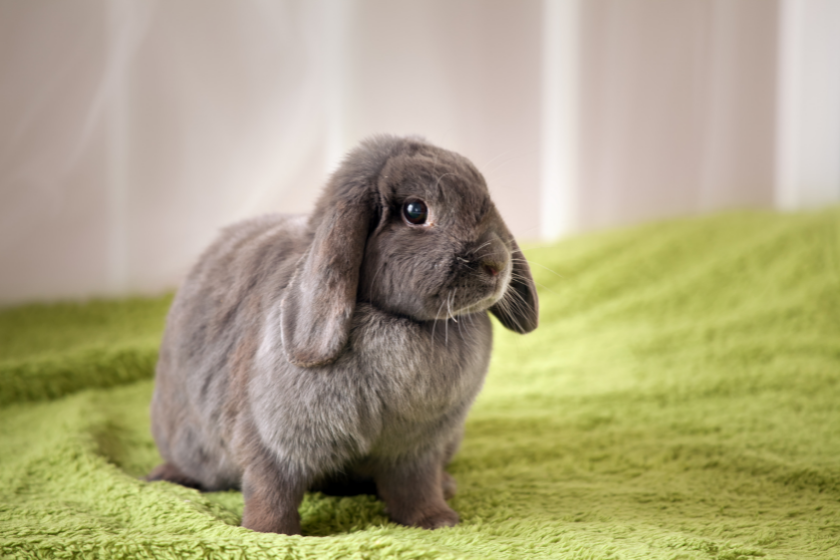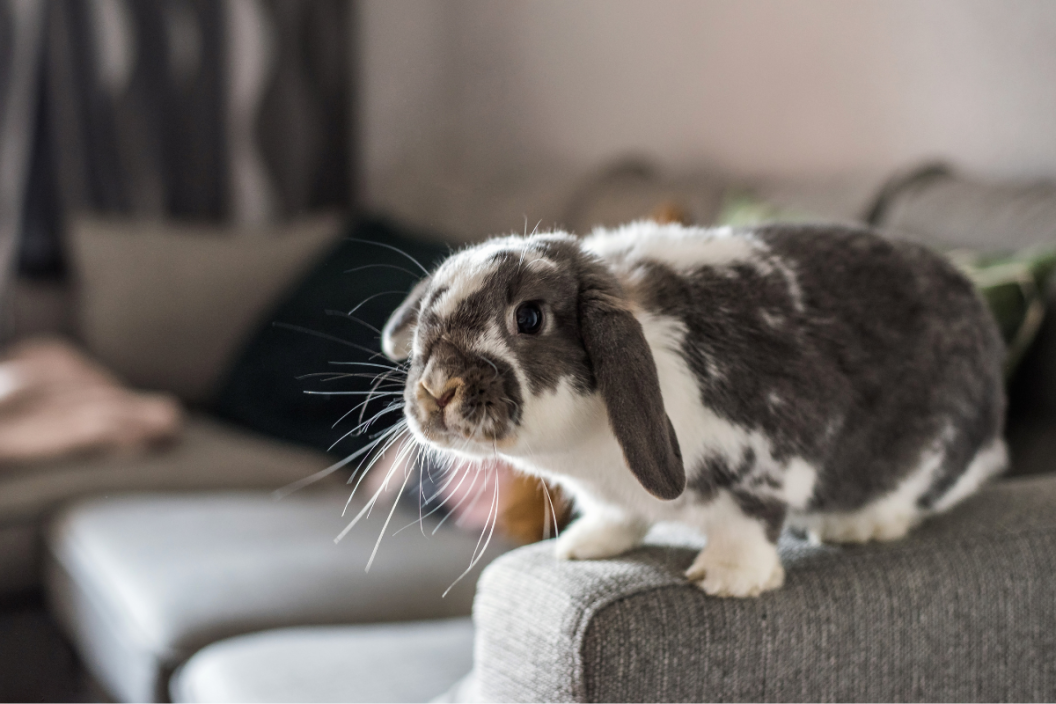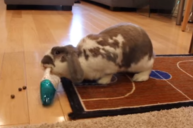Like guinea pigs, rabbits are one of the most popular small pets.
Thinking about raising a cage-free bunny? Just like cats and dogs, bunnies are happy to have free rein inside their homes. Raising a free-roam bunny means that they will spend little to no time in a rabbit cage or hutch, instead having the ability to explore your home freely.
If you think a free ranging cage-free lifestyle is the right fit for you and your bunny, here is a short guide to everything you need to know about training and raising a free-roam bunny. It's safe to say you should expect the unexpected when bringing home a rabbit. Your house rabbit will soon be able to roam through your house safely, and chances are he'll be happy with his new arrangement.
Prepare Your House for Free Roam Bunnies
Bunny Proofing

Before you introduce your bunny to their new home, the first thing you need to do is ensure that your home is bunny-proof so you can keep your rabbit safe, just like he would be in a cage. Just like with babies or puppies, you need to make sure that there is nothing in the house that your bunny could get into that could hurt them. You also want to make sure that the chance of them damaging anything is minimized.
Rabbits have a natural tendency to chew on items in their environment, so the first thing you need to do is to conceal any cords or cables that they could try and nibble on. If you have cables that run along your floor, using PVC piping or cord concealers is an easy way to protect them without major changes to your wiring setup. In a pinch, you can even use chicken wire to seal off areas until you can arrange a more permanent fix.
Once all of your cables are dealt with, the next thing on your list should be any wooden furniture or baseboards. Free range rabbits love to chew on wood, making the wooden items in your home attractive treats.
The easiest way to protect your baseboards is to install a plastic barrier that stop your bunny from being able to reach them. For your wooden furniture, try and remove as much as possible from the areas of your home your bunny will be in. For any furniture that can't be moved, adding a plastic shield similar to the baseboards to the bottoms of the furniture will provide good protection.
When it comes to upholstered furniture and carpets, make sure that there are no loose ends or dangling pieces that your bunny could chew on.
If you're worried about your bunny chewing on the underside of your furniture, place a clear plastic carpet runner with the spike side up below it. This is a safe and easy way to deter your bunny from crawling beneath the furniture in the living room or other areas of your home.
House Training

Once you've bunny-proofed your home, the next thing to think about is house training. Pet rabbits that are spayed or neutered have an easier time with litter training as their urges for territorial marking are reduced. Having your bunny spayed or neutered also helps with behavioral issues and reduces the possibility for certain diseases. Overall, having your bunny fixed is a great idea.
To house train your bunny, you first need to choose a location for the litter box. It's a good idea to place the litter box on a hard, uncarpeted surface, especially while training as accidents can happen. Even a fully housebroken bunny can still have accidents outside the box.
When it comes to choosing a litter box, a shallow storage container. Cats love cardboard boxes, and these can work for rabbits as well. You can also use boxes designed specifically for cats. Inside the litter box, lay a thin layer of litter and spread some hay around for your bunny, as they like to eat hay while doing their business.
During house training, it is best to confine your bunny to the area the litter box is in until they begin to use it regularly. If accidents continue to occur outside of the litter box, simply clean them up and place the droppings (i.e. poop) and paper towel used inside the litter box to reinforce its purpose. It can take a couple of weeks or more before your rabbit begins to understand house training.
Begin Slowly

Once your bunny has mastered the litter box, you can begin to slowly expand their roaming area.
During this time, it's important that you keep an eye on them to make sure that they aren't getting into anything and that they are continuing to use their litter box consistently. If accidents begin to happen once you expand their space, reduce it until they begin using the litter box again.
As your bunny becomes used to their larger roaming environment, they can be left unsupervised as a true free-roam bunny.
Free Roam Bunny Bedding and Toys

Once your bunny is successfully cage-free, make sure that they have all of the same comforts they would have in a cage, such as beds, toys, food, and water. Since your bunny will be exploring different rooms in your home, it's a good idea to have bedding and rabbit toys available in each of the different areas. Toys especially will help keep your bunny occupied and reduce the chance for naughty behavior, like chewing furniture.
Raising free-range domestic rabbits does take some extra effort upfront, but will be undoubtedly rewarding the long run. Your free range bunny will have more freedom, and with a happier, healthier arrangement, may treat you to binkies and other expressions of pure joy. Free ranging rabbits offer plenty of benefits for you both.
Not only does your bunny get endless space to explore and relax, but you also get the sounds of bunny feet hopping around all the time! Whether you have a Lionhead, Rex, New Zealand, Holland Lop, or other breed of rabbit, giving free range living a try might delight your rabbit.
Have you thought about raising your bunny cage-free in the past? Let us know on the Wide Open Pets Facebook page!
This article was originally published February 21, 2020.




